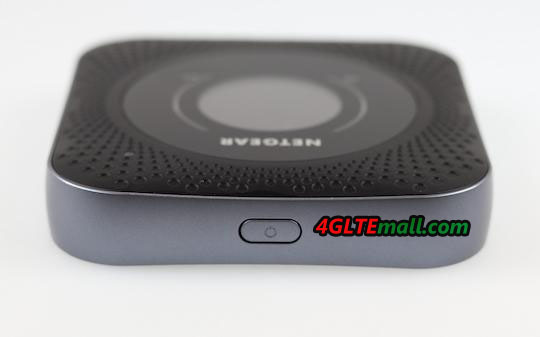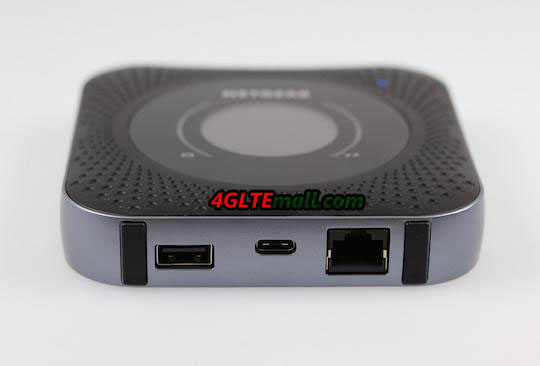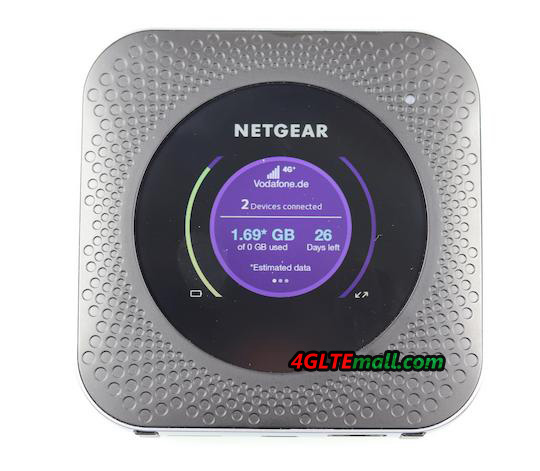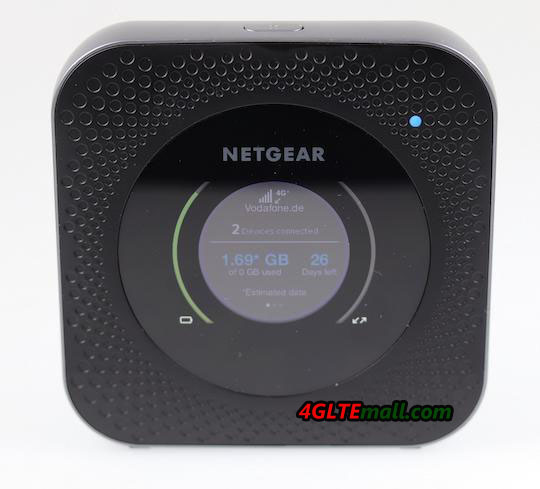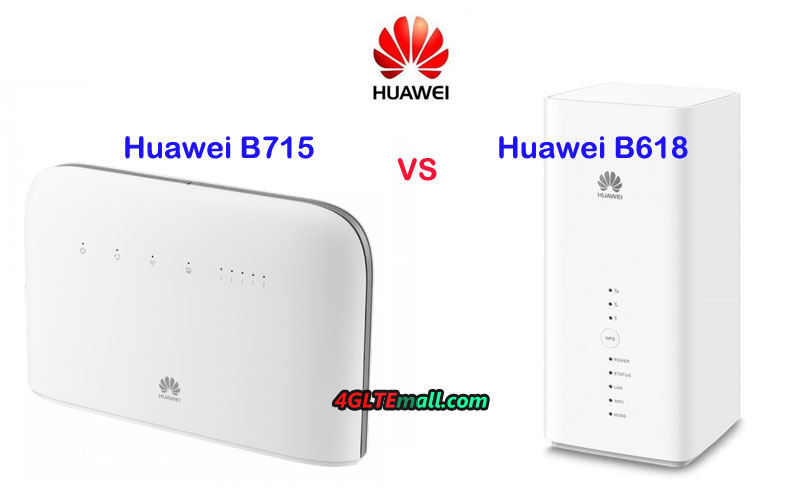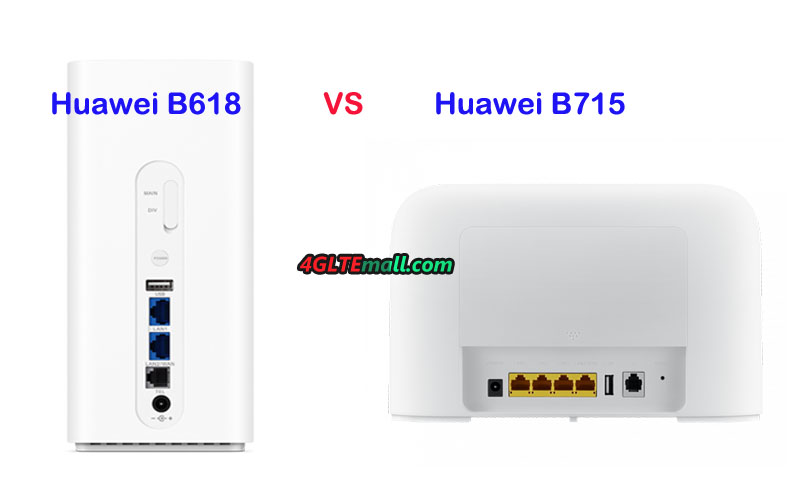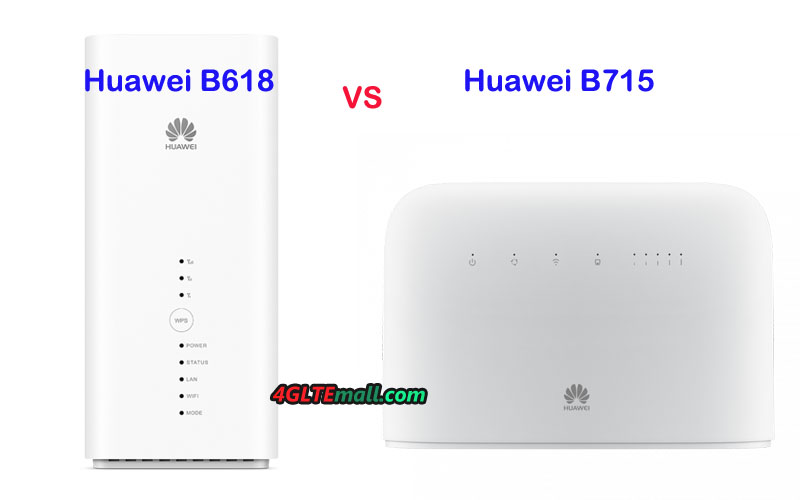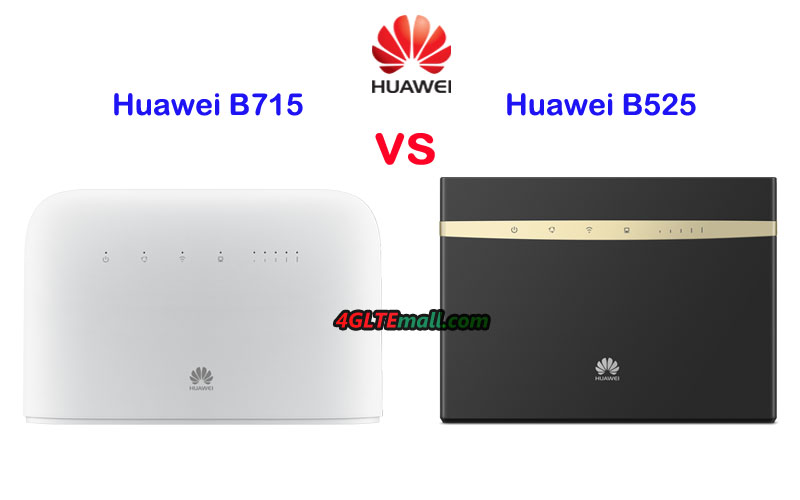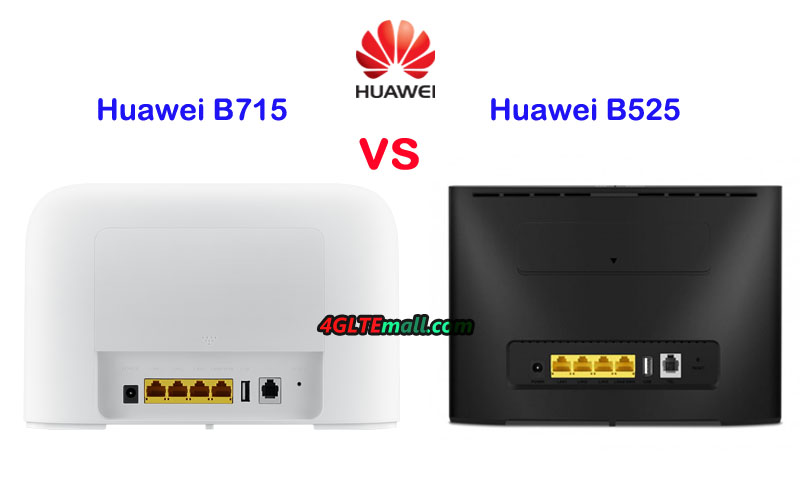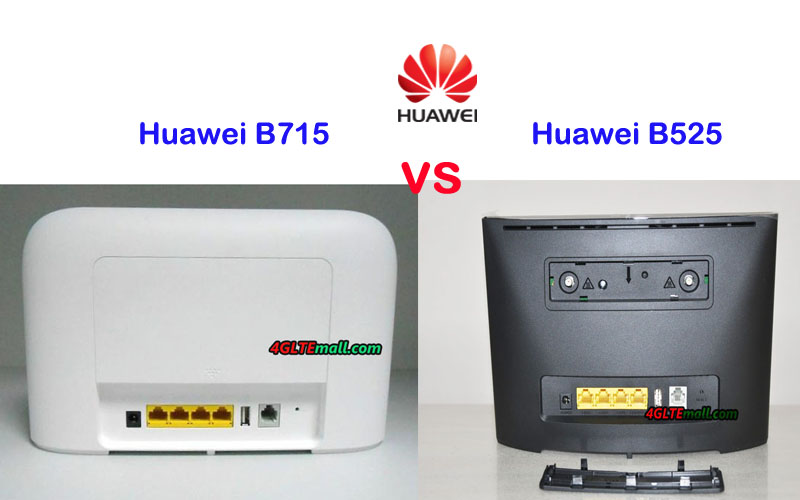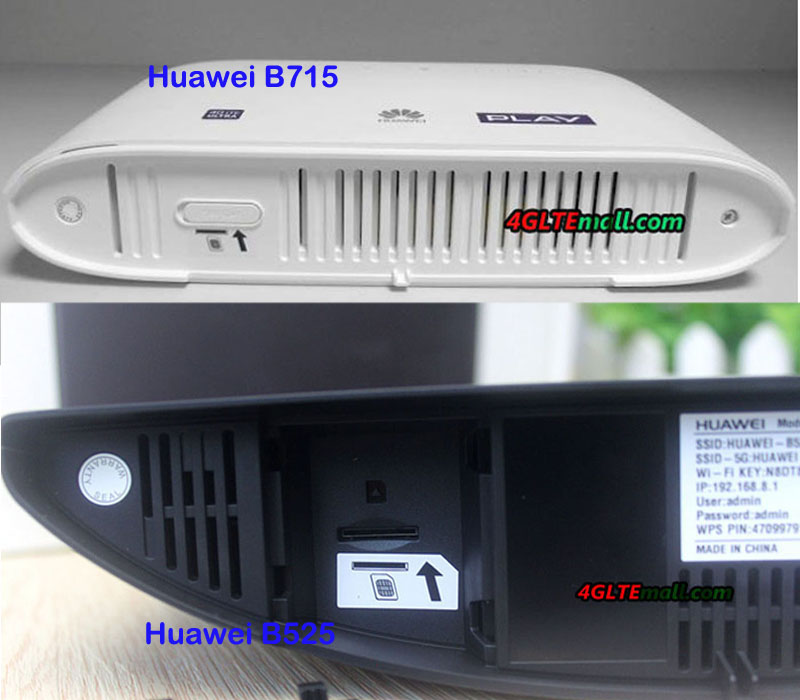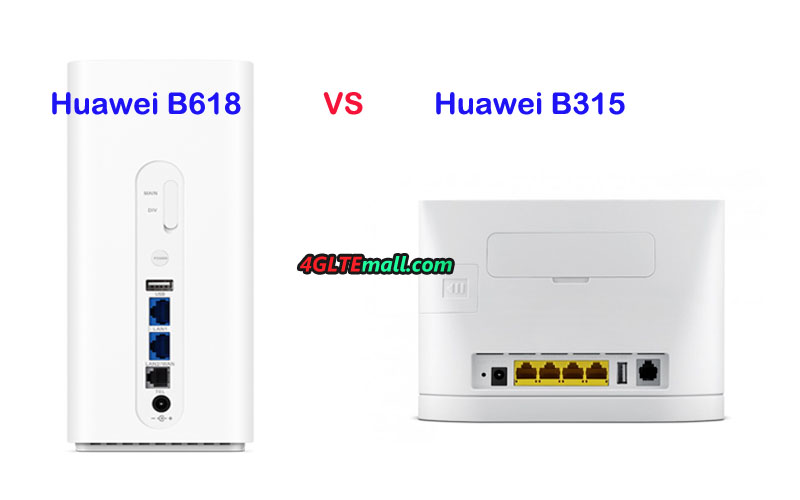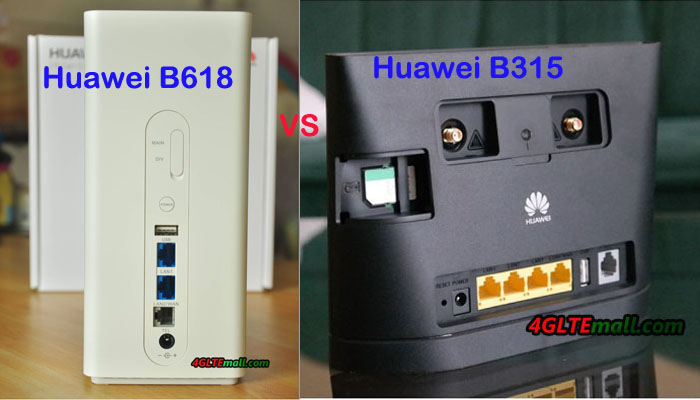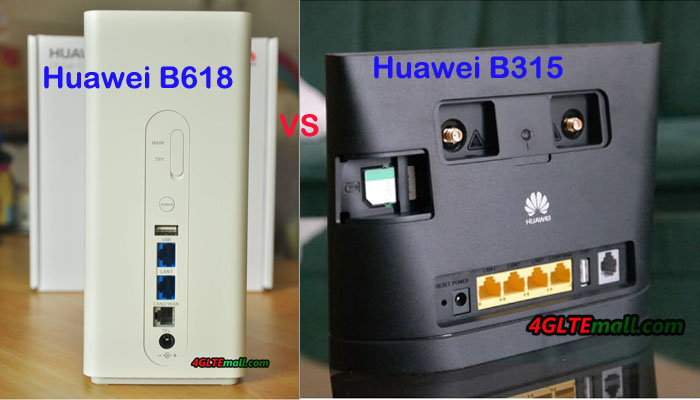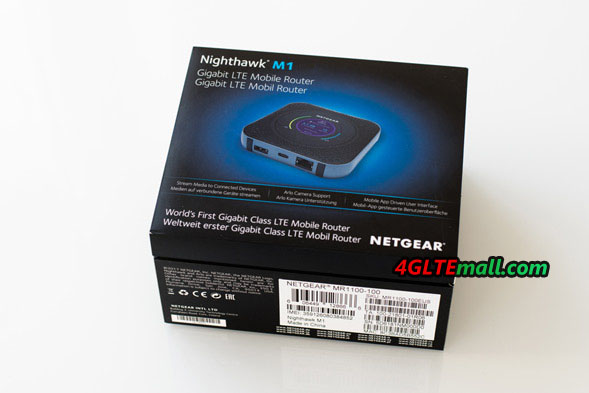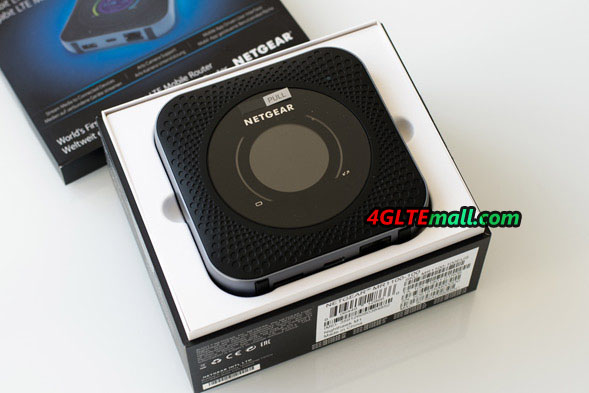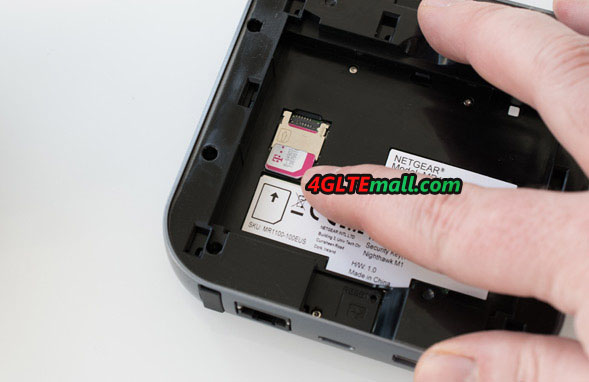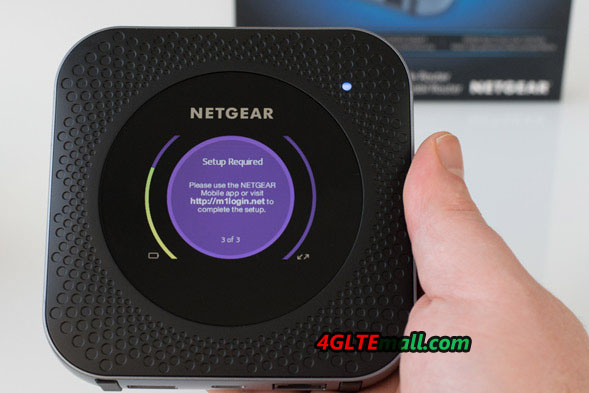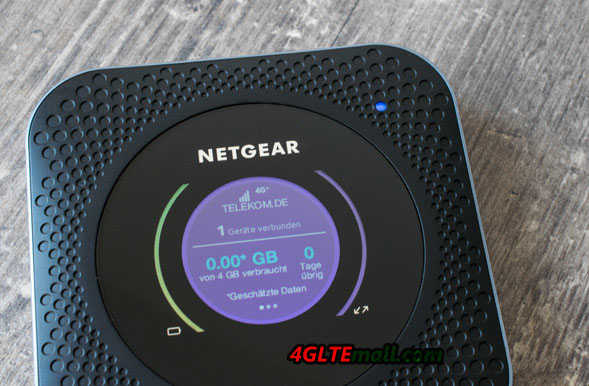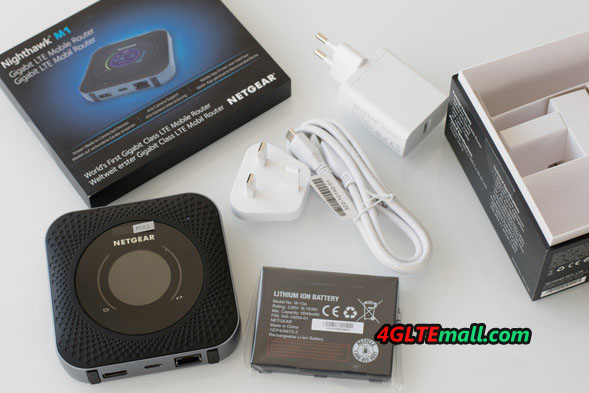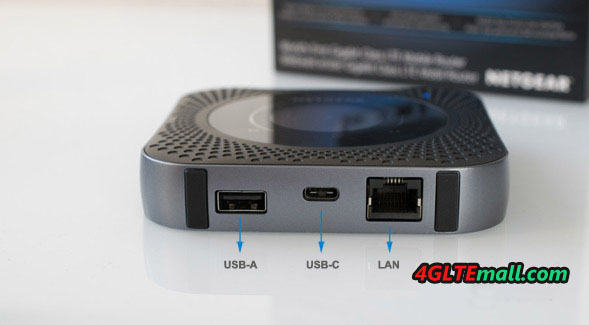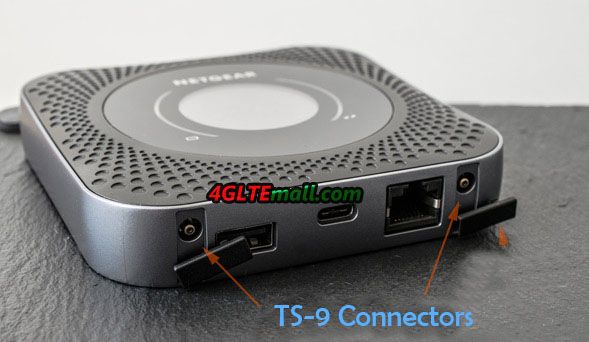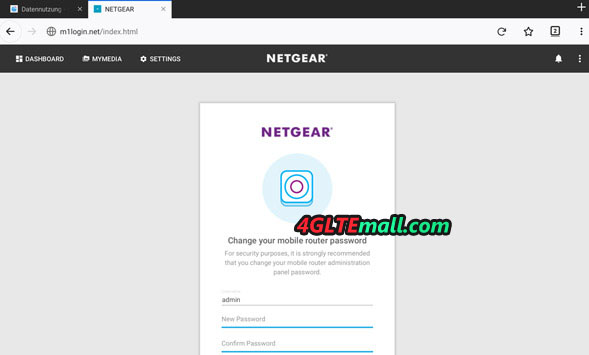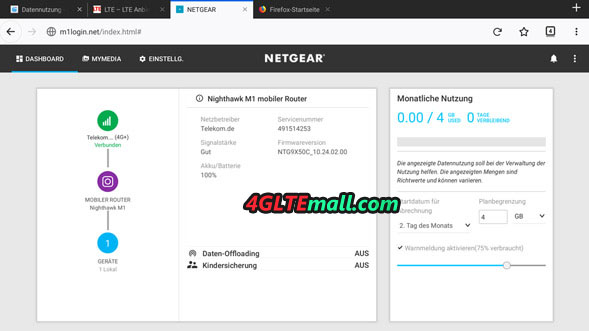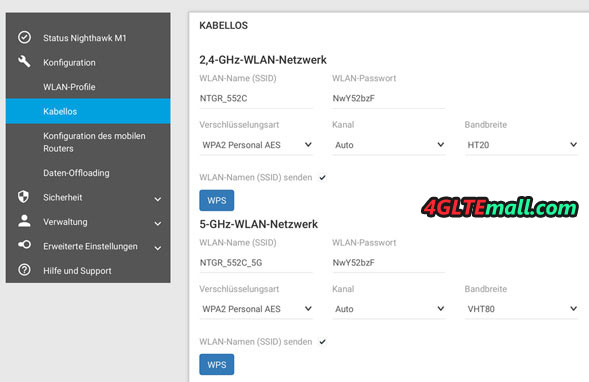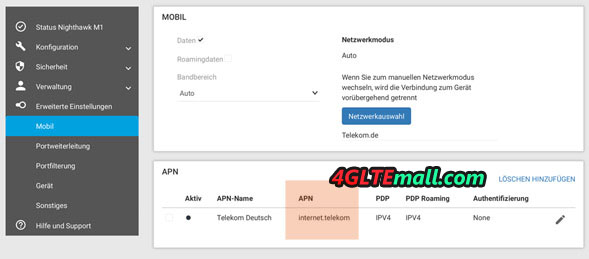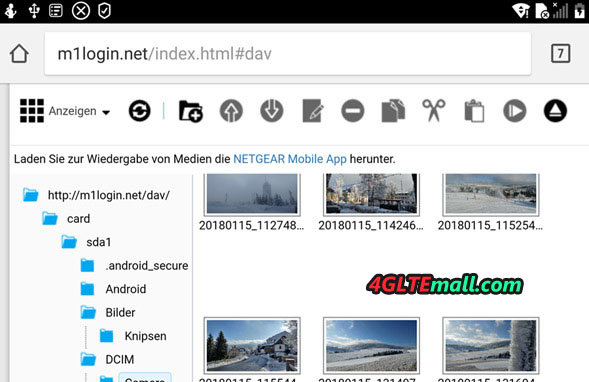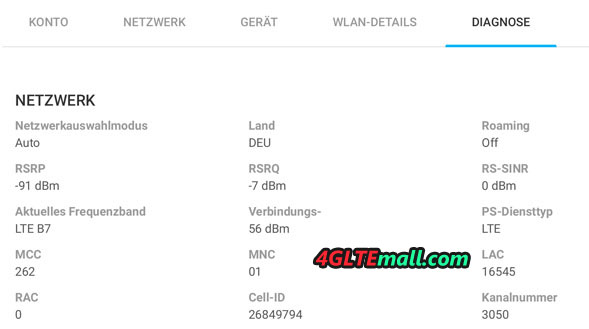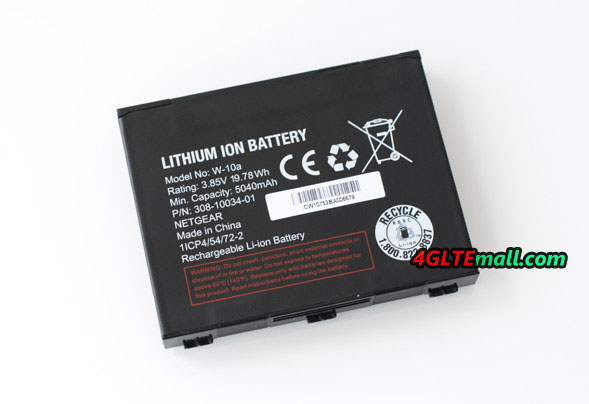LTE Broadband
-
Netgear Nighthawk M1- Best Mobile Router for Travel
Not all mobile devices are equipped with a SIM card. However, you have to know the latest Netgear Nighthawk M1 with high speed via LTE, the most important is that it’s an LTE advanced Pro router with SIM card slot and Ethernet port. The Nighthawk M1 could achieve download speed up to 1Gigabit, which is almost in the range of the 5G speed.
Nighthawk M1 from Netgear is known for fleet router for mobile use, can it also be used at home or office. The 4G SIM router has a battery for mobile operation and can be loaded in every suitcase and almost every handbag. It simply gets his network from the air via the LTE wireless networks and transfers data for up to 20 devices. Thus, it should be the ideal companion for every trip.
Netgear introduced the Nighthawk M1 last year at the Consumer Electronics Show (CES) in Las Vegas. The Australian carrier Telstra first introduced the Nighthawk router to its product range and then US carrier ATT followed. A year later, the device is finally available for users in Europe. Fortunately, the Netgear M1 comes out in Europe without a provider branding, so it’s unlocked can be operated in any network. In the US, the Nighthawk mobile router is limited to AT&T's network while the Nighthawk router is limited to Telstra in Australia. The built-in modem supports the LTE Cat.16 and achieves maximum speeds of 1 gigabit per second (Gbps) in the download, at least in theory because only a few areas in Europe give such transmission rates. In addition, the transfer to mobile devices is possible via WLAN-ac or the built-LAN connection. The Netgear Nighthawk M1 always ensures fast Internet everywhere.
Anyone surfing through LTE should always keep an eye on current consumption so as not to exceed the high-speed volume. The Nighthawk M1 succeeds on a built-2.4-inch display. At the side of it are the status indicator for the current battery level and the strength of the network. If the latter is too low, the Netgear M1 will accept a maximum of two TS-9 antennas for reception. The user can control or setup the mobile 4G router through web page or Netgear Mobile APP. The Netgear Mobile app can be used to make settings and even set up a parental control. The built-in battery is generously sized with 5040 mAh and can keep continuous working for a day and a night according to the manufacturer.
Netgear Nighthawk M1: Price and Availability
Since Telstra and ATT had already presented the product to the public for a long time, here now there are many unlocked Nighthawk M1 available in the market. The unlocked Nighthawk M1 is available on online store www.4gltemall.com with a price of around 459.00USD with free 4G MIMO Antenna with two TS-9 connectors. For the operation, it then still needs a micro-SIM card and a corresponding tariff. If you would take the Nighthawk M1 for travel, you’d better get an unlocked Nighthawk M1 router and get a valid SIM card from the network provider in the destination to work with the M1 router. But you will never get an unlocked Nighthawk M1 from the carriers in the destination country.
PR -
Huawei B715 VS Huawei B618 LTE CPE
As time goes, more and more network providers upgrade their LTE networks to LTE Advanced with the application of new LTE technology such as carrier aggregation and MIMO. Many customers want to surf at the faster speed than ever. So an LTE advanced router may be necessary for home or office. Huawei B618 and B715 are two latest popular routers for the LTE-A networks. Someone may ask: what’s the difference between Huawei B715 and B618? To buy one from them, which one is better? To answer this question, let’s have a compare of the two LTE WiFi routers.
Appearance
Huawei B715 and B618 router both could work well in Europe. Some network providers already introduced them to their contract plan. The Huawei B618 was available for EE, Telekom on the model number B618s-22d while B715 was available for LMV on the model number B715s-23c. The Huawei B715s-23c looks like the common Huawei 4G WiFi router such as Huawei E5186 or Huawei B525, but Huawei B618 looks like a cube. You may think it’s a smart home device rather than an LTE-A wireless router.
On the front of Huawei B715s-23c, there are few indicators for power, data transmission, WiFi, connected device, and signal. On the back, there are 4 RJ45 ports for LAN, one of which is for WAN/LAN. And one RJ11 port is available for connecting telephone. Huawei B618s-22d LTE router has only one port for LAN/WAN and another one for LAN only. They both have a USB 2.0 port for sharing file. Like other Huawei LTE routers, the Huawei B715s-23c has two SMA connectors for external antenna while the Huawei B618s-22d WiFi router has two TS-9 connectors for 4G external antennas. They both have the same feature that the SIM card slot is at the bottom of the body.
Technical Specifications To know more about the technical specs of the two LTE-A router, the table below will give clear information about the chipset, category, data rates, supported frequency bands, interfaces, and prices etc..
Model Huawei B715s-23c Huawei B618s-22d Product type LTE WiFi Router with SIM card slot and Ethernet port LTE WiFi Router with SIM card slot and Ethernet port Category LTE Cat.9 LTE Cat.9/ Cat.11 Chipset ? HiSilicon Balong 750 Data rates DL 450Mbps/UL 50Mbps DL 600Mbps/UL 100Mbps Supported 4G LTE frequency bands LTE B1, B3, B7, B8, B20, B28, B32, B38 LTE B1, B3, B7, B8, B20, B38 WiFi 802.11a/b/g/n/ac, dual-band 2.4GHz & 5GHz 802.11a/b/g/n/ac, dual-band 2.4GHz & 5GHz Max support users 64 users 64 users MIMO 4 X 4 MIMO 4 X 4 MIMO Connector for external antenna Two, SMA-female jacks Two, TS-9 jacks App management Huawei Hilink APP Huawei Hilink APP SIM type Micro SIM Micro SIM Battery NO NO Dimensions 240mm × 448mm × 47mm 95mm × 95mm × 208mm Interfaces * 3 x LAN port(45) * 1 x LAN/WAN port (45) * 1 x telephone port(RJ11) * 1 x USB 2.0 port * 1 x LAN port(45) * 1 x LAN/WAN port (45) * 1 x telephone port(RJ11) * 1 x USB 2.0 port Other features VPN, VoLTE, IPv4 /IPv6 dual stack, DMZ, Port forwarding DHCP Server, DNS RELAY and NAT, VoLTE, IPv4 /IPv6 dual stack Price 399.00USD 449.00USD Conclusion
From the appearance, we can see both the Huawei B618s-22d and B715s-23c are cool, but I personally love Huawei B618s-22d better. But if you want the WiFi router to have more Ethernet ports to connect your desktop, the Huawei B715s-23c may be better. From the specs, we can see Huawei B618s-22d support higher level LTE networks with faster LTE downlink & uplink speeds. But if you need the LTE router to work for more LTE frequency bands especially for band 32 or band 28, Huawei B715s-23c should be taken into consideration. And the Huawei B618s-22d with advanced LTE technologies would be more expensive, if you don't care about the price, Huawei B618s-22d would be the right one for your home or office.
-
Huawei B715 VS Huawei B525 LTE Router
In past few years, Huawei has presented many LTE WiFi routers to the market. Some are especially for the network provider in specific areas or countries; Some are open for all the market (SIM-free for global travel). However, Huawei did not provide a full list of its 4G LTE Routers. Some models, so the specs of the Huawei LTE routers. Huawei B715 LTE routerand Huawei B525 are the two Huawei official website, but they are definitely Huawei products for LTE-A networks. Some customers may have a problem with the application of the two routers for their applications at home or office etc. Today, we will have a general review of the difference between Huawei B715 and B525 router. You can get the reference if you want to buy one of them.
Appearance
Unlike the latest Huawei B618 LTE Cube, both the Huawei B715 and B525 are in the shape of a traditional wireless router. On the front, the Huawei logo and few LED indicators for power, WiFi, internet connection status and signal strength. On the back, 3 LAN ports and one LAN/WAN port with telephone port are listed at the below side. On the top side, two SMA connectors for external antennas are covered by a cap. Huawei B525 router had the label at the bottom, and we can see the crescentic shape from the bottom side.
The label of Huawei B715 is just at the side of the external antenna connectors. The label and connectors are covered by a whole cap. However, like the Huawei B525 router, the SIM card slot of Huawei B715 is also located on the bottom side. Like other Huawei 4G wireless router, some important information would be printed on the label, such as the model number, IMEI number, S/N number, SSID, WiFi Key, web log in IP address, WPS pin, FCC ID, power plug voltage, WiFi certified, RoHS logo, Made in China and some model may have the supported LTE frequency bands if there is. Here now, the Huawei B715 has only white color available, but Huawei B525s-23a has black and white color available.
Variant models
Here now, the Huawei B715 has only one variant model Huawei B715s-23c with the support of 4G LTE Band 1/3/7/8/20/28/32/38 and 3G &2G network backward compatible. We are not sure whether Huawei will release more variant models to support different LTE frequency bands combination for other network providers. But as you can see, Huawei B525 has three variant models: B525s-23A, B525s-65a, B525s-95a. They support the frequency bands as below:
* Huawei B525s-23a:
- Support 4G LTE Band 1/3/7/8/20/32/38 (FDD 800/900/1500/1800/2100/2600MHz, TDD 2600MHz)
- Support 3G DC-HSPA+/HSPA+/UMTS Band 900/2100MHz
- Support 2G GSM/GPRS/EDGE 850/900/1800/1900MHz
- Support 4G LTE Band 1/3/4/5/7/8/20/19/26/28/32/38/40/41 (FDD 2600/2100/1900/1800/1700/1400/900/850 / 800 / 700MHz, TDD 2300/2500 / 2600MHz)
- Support DC-HSPA 3G + / HSPA + / UMTS Band 1/2/5/6/8/19
- Support 2G GSM / GPRS / EDGE 850/900/1800 / 1900MHz
* Huawei B525s-95a : Unknown yet!
Specifications
You may be attracted by the appearance of the two routers, but when you want to work at your location, you must see the specifications of the two routers. Below is the list comparison of the Huawei B715s-23c and Huawei B525 WiFi router specs for your reference:
Model Huawei B715s-23c Huawei B525 Product type LTE WiFi Router LTE WiFi Router Category LTE Cat.9 LTE Cat.6 chipset ? HiSilicon LTE Cat6 Chipset Data rates DL 450Mbps / UL 50Mbps DL 300Mbps / UL 50Mbps Supported 4G LTE frequency bands LTE B1, B3, B7, B8, B20, B28, B32, B38 B525s-23a: Band 1/3/7/8/20/32/38
B525s-65a: Band 1/3/4/5/7/8/20/19/26/28/32/38/40/41WLAN 802.11a / b / g / n / ac, dual-band 2.4GHz & 5GHz 802.11a / b / g / n / ac, dual-band 2.4GHz & 5GHz Max supported users 64 users 64 users MIMO 4 X 4 MIMO 2 x 2 MIMO Connector for external antenna Two, SMA-female jacks Two, SMA-female jacks Buy Antenna Huawei B715 External Antenna Huawei B525 external antenna App management Huawei Hilink APP Huawei Hilink APP SIM Size Micro SIM Micro SIM Battery NO NO Dimensions 240mm × 448mm × 47mm 163 x 52 x 226 mm interfaces * 1 x power adapter port
* 3 x LAN port (45)
* 1 x LAN / WAN port (45)
* 1 x phone port (RJ11)
* Two external LTE antenna ports (SMA-J1.5)
* One micro-SIM card slot
* 1 x USB 2.0 port* 3 x LAN port (45)
* 1 x LAN / WAN port (45)
* 2 x phone port (RJ11)
* Two external LTE antenna ports (SMA-J1.5)
* One micro-SIM card slot
* 1 x USB 2.0 portdatasheet Huawei B715 Datasheet (PDF) Huawei B525 Datasheet (PDF) User Manual Huawei B715 User Manual (PDF) Huawei B525 User Manual (PDF) Other features VPN, VoLTE, IPv4 / IPv6 dual stack, DMZ, Port forwarding Firewall, CS Voice, VoIP, TR069 Remote Management, HTTP Online Upgrade, QoS, USB Share, UPnP, IPV6, DLNA, Fax, Print, VPN Reviews Huawei B715s-23c Review Huawei B525 Review Price / USD 399.00USD 259.00USD
Conclusion
From the specs table, we can see Huawei B715s-23c is more advanced. Huawei B525 provides more variable models for different LTE frequency band combinations and more colors to select. Usually, the more advanced of the router, the price higher. So we can see the Huawei B715 is more expensive than Huawei B525 router. If you do not care about the price then Huawei B715 is the right one for you. Huawei B525 may not be the most advanced, but for most customers, the downlink speed is enough for most applications. Almost same interfaces would not help you. VPN, VoLTE, VoIP or DHCP, you can check the datasheet carefully to confirm. HOWEVER,Five Tips to Buy a Huawei 4G Router.
-
Huawei B618 VS B315 LTE WiFi Router
As the top telecom equipment supplier, Huawei LTE WiFi routers had gained a great reputation worldwide based on the good performance and reasonable good price. Since there are many Huawei 4G WiFi Routers available in the market, for those who are not familiar with Huawei routers, it’s still a big problem to buy a best 4G WiFi router for them. Huawei B315 and B618 are two popular Huawei WiFi routers if a customer wants to buy one router from them, which one to choose? What’s the main difference between Huawei B618 and B315? You will find the answer in this article.
Appearance
Huawei 4G Router B315 was available since 2016 and it’s in a traditional router shape. However, the latest Huawei B618 was presented to the public since the second half year of 2017. And Huawei B618 is in a cube shape, which makes you think it’s a kind of furniture rather than a wireless router. From the pics below, you can see the different shape of the two routers. On the front of Huawei B315, there is Huawei logo and a few LED indicators for power, WiFi, internet, signal status. Huawei B618 has the Huawei logo on the top side, the WPS button is in the middle of WiFi signal and other status indicators such as Power, WiFi, LAN, Status, Mode.
On the back, the Ethernet port and connectors for the 4G external antenna are located. Since Huawei may assign the router with many variant models, the Ethernet port quantity may vary. The Huawei B618s-22d has two LAN ports (one is for LAN/WAN) and one phone port with a USB 2.0 port. As one of the variant model of Huawei B315, Huawei B315s-22 has four LAN ports (one is for LAN/WAN) and one phone port with USB 2.0 port. However, another variant model Huawei B315s-936 doesn’t have the phone port and USB 2.0 port. They all have two connectors for external antenna, the Huawei B315 connector type is SMA while the Huawei B618s-22d antenna connector is in TS-9 type. If you would like to buy the external antenna for the two router, you may check the professional 4g antenna shop.
The power button and WPS button of Huawei B315 are on the top side of the router. And the label for product detail is on the bottom side of the body. The SIM card slot of Huawei B315 is on the back side of the body while Huawei B618 locates the SIM card slot at the bottom. The Huawei B618 has the label at the bottom too with the WPS button. Specs From the appearance, you may still have trouble to select which one for you. Then the specs of the Huawei B618s-22d and Huawei B315 would tell what’s the key point of the difference between the two routers:
Model Huawei B618 Huawei B315s Product type LTE WiFi Router LTE WiFi Router Category LTE Cat.9/ Cat.11 LTE Cat.4 Chipset HiSilicon Balong 750 Hisilicon Balong Data rates DL 600Mbps/UL 100Mbps DL 150Mbps/UL 50Mbps Supported 4G LTE frequency bands B618s-22d: Band 1/3/7/8/20/38 B618s-65d: 1/3/5/7/8/28/40 * Huawei B315s-22: 4G LTE B1/B3/B7/B8/B20/B38 * Huawei B315s-607: 4G Band 1/3/7/8/28/40 * Huawei B315s-936: 4G Band 1/3/40/41 * Huawei B315s-608: 4G Band 1/3/5/7/28 WLAN 802.11a/b/g/n/ac, dual-band 2.4GHz & 5GHz 802.11b/g/n, 2.4GHz Max supported users 64 users 32 users MIMO 4 X 4 MIMO n/a Connector for external antenna Two, TS-9 jacks Two, SMA-female jacks Buy Antenna Huawei B618 Antenna Huawei B315 external antenna App management Huawei Hilink APP Huawei Hilink APP SIM Size Micro SIM Standard SIM Battery NO No Dimensions 95 × 95 × 208mm 186.0mm x 139.0mm x 46.0mm Interfaces * 1 x LAN port(45) * 1 x LAN/WAN port (45) * 1 x telephone port(RJ11) * 1 x USB 2.0 port * 1 x power adapter port * 3 x LAN port(RJ45) * 1 x LAN/WAN port (45) * 1 x telephone port(RJ11)(depends) * Two external LTE antenna ports (SMA-J1.5) * One SIM card slot * 1 x USB 2.0 port(depends) Datasheet download Huawei B618 Datasheet Huawei B315 Datasheet(PDF) User Manual Huawei B618 User Manual Huawei B315 Manual(PDF) Other features DHCP Server, DNS RELAY and NAT, VoLTE, IPv4 /IPv6 dual stack VoIP, DHCP, NAT, IPv6/IPv4 dual stack, Firewall, Port forwarding, DMZ, ALG, Remote management Reviews Huawei B618s-22d Review Huawei B315 Review Price/USD 449.00USD 169.00 From the specs, we can see the Huawei B618s-22d WiFi router is far more advanced than Huawei B315 router technically. It could peak download speed up to 600mbps, which is almost 4 times than that of B315 Router. It has advanced WLAN feature 802.11ac with dual-band, while up to 64 devices could access the internet when connected with B618 LTE CPE. The advantage of Huawei B315 is the multiple variant models for various LTE frequency bands while Huawei B618s-22d is mainly for Europe, Asia, Australia, Africa and Middle East area. Huawei B315 could be used in more wide areas but you must select the specific right model. Another advantage is that Huawei B315 is not as expensive as Huawei B618. Because Huawei B618 is with many advanced LTE technologies, the price is higher.
Conclusion
Huawei B618 (B618s-22d) is no doubt much better than Huawei B315 technically. But Huawei B315 is attractive on the multiple variant models which would support different LTE network providers worldwide. And Huawei B315 is in a cheaper price than that of B618. For those who use the router at home, the speed of Huawei B315 is enough for daily applications. If you are a technology geek or want a future-proof LTE router and don’t care about the price, the Huawei B618 is definitely the right one.
-
Netgear Nighthawk M1 Gigabit LTE Router Test
Netgear Nighthawk M1 LTE router with the model number MR1100 was available first in Australia for Telstra, and then in USA for AT&T. Now it’s available for some carriers in Europe. The LTE advanced Pro mobile hotspot is equipped with a Gigabit LTE modem from Qualcomm and offers very good equipment with RJ45 LAN port, power bank function and large, removable battery. In this test, we will see whether the device will work as good in practice as the datasheet suggests and whether it is a worthy successor to the AirCard 810 hotspot.
Appearance and first impression
In Australia, the Netgear Nighthawk M1 has been available since about March 2017, but the European version with the model number MR1100-100EUS is designed specifically for the European market and supports the LTE frequency bands used in these countries. In addition to the Nighthawk M1 router itself, you will also find a quick start guide, a USB Type C cable, and a power supply. The first impression after unpacking the Nighthawk M1: the router is really big, significantly larger than other Netgear 4G mobile Wi-Fi hotspots. After switching on, then immediately falls on the round display, which is a nice design element. The workmanship works well; everything is tight, so as the battery cover.
There is a power button at the top of the device. This provides a good pressure point but must be pressed for an exceptionally long time to turn the Nighthawk router on or off. On the bottom, there is a USB Type C port for charging the hotspot and for connecting to the PC, a USB Type A port for charging other devices, an RJ45 LAN port and two TS-9 ports for an external antenna. The battery has a capacity of a proud 5,040 mAh and is easily changeable by the user. Underneath the battery is the slot for the SIM card (3FF Micro SIM form factor) and a slot for a Micro SD memory card.
Since the Nighthawk M1 has a different body form and a different USB connection than the predecessors of the Netgear AirCard series, the router is also not compatible with the docking station DC112A AirCard Smart Cradle. This is, of course, annoying if you already own the expensive docking station and now wants to change to the Nighthawk M1.
Gigabit LTE modem for DL 1Gibt/s
The Netgear Nighthawk M1 integrated mobile modem can use LTE Cat16 with up to 1 Gbit/s in the downlink and up to 150 Mbit/s in the uplink. This is made possible by support for various 4.5G technologies such as 4 × 4 MIMO antenna technology, 4CC CA (Carrier Aggregation ) and 256QAM modulation. In addition, 3G/UMTS is supported with up to 42.2 Mbps in the downlink and 5.76 Mbps in the uplink (DC-HSPA+). However, the Nighthawk M1 doesn’t support 2G GSM networks, which may not be bad news, because the device does not fall back into a slow network in automatic mode, in which surfing is not fun anyway.
In real use, the speed of up to 1 Gbit/s in the downlink is only very rarely achieved. This must be based on perfect network conditions given accordingly, which is the case only in a few places. The various 4.5G technologies help the router to provide higher speeds even with slower LTE radio cells, for example, provides the 256QAM support for up to 33% higher data rate in the downlink.
In testing with a Telekom SIM card, the Netgear Nighthawk M1 scored in many cases with very good data rates. In an LTE Band 3 radio cell, up to 135 MBit/s in the downlink, up to 64 MBit/s in the uplink and well under 30 milliseconds ping could be measured. In particular, the downlink was higher in various tests than in comparison devices. In the UMTS network, the Netgear Nighthawk M1 also showed an outstanding performance: about 33 MBit/s in the downlink and 4.6 MBit/s in the uplink are technologically almost the maximum performance.
However, the test of the Nighthawk M1 also showed weak spots in regions with activated carrier aggregation, which probably has to be related to the modem firmware. So the Nighthawk router had not used channel bundling in some locations. In particular, it was repeatedly observed that the Nighthawk M1 was booked in the LTE band 8, while the iPhone at the same location LTE Band 3 as a "baseband" and also used band 7 via CA. The data rates were also correspondingly poor: the iPhone reached well over 200 MBit/s, the Netgear M1 only slightly above 20 MBit/s. Only after several reboots changed the Nighthawk M1 on LTE band 3, but seemed to continue to dispense with Carrier Aggregation.
The reception was very good both in the UMTS network and in the LTE network (band 3, band 8 and band 20 tested). If necessary, it is also possible to connect an external antenna. In the test, a 4G LTE Outdoor antenna with two TS-9 pigtails worked very well.
Operation and software
Although the Netgear Nighthawk M1 offers a nice display on the front, this is not a touchscreen and therefore not suitable for operating the device from the screen. The entire configuration is therefore via a web interface or the "Netgear Mobile" app, which is available for Android and iOS. The app is very successful. The design of the web interface and the app is also impressive, you can find your way around quickly and a good compromise between functionality and design.
The Netgear Nighthawk M1 router offers various settings. In addition to the "usual" things such as settings for Wi-Fi name and Wi-Fi password, there are also "exotic" things like the display brightness and the illumination duration, which can be adjusted manually. In the area "MyMedia" you can access the data of the MicroSD memory card, provided you have inserted a suitable storage medium. The data can be shared in the network for all participants.
Praiseworthy is also the detail view of the device as well as to the network connection. The "Status" tab shows, for example, the network technology used, the frequency band used, RSRQ and RSRP, and other data. Even the temperature of the device and the battery can be viewed. Of course, the Netgear Nighthawk M1 MR1100 router also provides the ability to update the firmware online directly via the web interface. In the test device came such a firmware update directly after the first set up, the installation went quickly and easily. There is the possibility to make a backup of the settings before installing the update.

Good Wi-Fi performance
If you want to use the full Gigabit LTE performance, you should definitely use the RJ45 Gigabit LAN connection. The WLAN is gross at a maximum of 768 MBit/s fast, at about 1-2 meters distance between router and laptop, the bandwidth dropped in the test to about 500 to 600 MBit/s. These are very good values for a mobile WLAN router. WLAN range and speed are better than most other mobile hotspots, but a stationary LTE router such as the Huawei B715 router is, of course, a bit better. On request, the WLAN via the web interface can also be completely deactivated or operated only in the 2.4 GHz/only in the 5 GHz range.
The Nighthawk M1 can simultaneously provide up to 20 devices with fast Internet, the device will operate both on 2.4 GHz and in the 5 GHz frequency range (802.11b/g/n/ac). The WLAN SSID and the password can be assigned separately for both frequency ranges. The transmission power can be set in the web interface in three stages. In the app or in the web interface, there is also the option to enable or disable the password display in plain text on the display of the Nighthawk M1. Also a nice feature: the device deactivates the WLAN on request, as soon as USB tethering is active.
Via the menu item "Data Offloading" you can use an existing LAN or WLAN network as Internet access, for example in the hotel or on the campsite. The integrated mobile modem is then deactivated. This feature is also known as "WLAN Extender".
RJ45 LAN connection
The Netgear Nighthawk M1 MR1100 has an RJ45 Gigabit Ethernet LAN port. You can use this port to connect a computer or a switch to the Internet via cable, but there is also the option of using an existing Internet connection as an alternative to the integrated mobile modem (the LAN port then becomes a WAN -Port). In the test, the LAN interface worked perfectly.
Battery with power bank function
The battery of the Netgear Nighthawk M1 MR1100 offers a comparatively high capacity with 5,040 mAh. The manufacturer promises a useful life of up to 24 hours with "normal" use. In the test, this could be approximately confirmed. Under full load, ie with continuous streaming and when using the road with many radio cell and technology changes, the runtime should be lower. A replacement battery of the type W-10a cannot be found yet. Through the full-size USB port, you can use the Nighthawk M1 as a power bank and charge other devices such as a smartphone. The test worked smoothly in the test.
Conclusion for Netgear Nighthawk M1
It was already foreseeable, but after the test, it is definitely clear: the Netgear Nighthawk M1 MR1100 is by far the best mobile LTE router that you can buy at the moment. The technical equipment is outstanding, the modem does a very good job and not only offers huge maximum data rates but also gets often significantly more out of the cell than most other devices in worse conditions. The successful software and a top battery life are also highlights. So the powerful functions, unfortunately, mean it will have a proud price: around 459USD (unlocked version).
In the test, unfortunately, some disadvantages were found. We have to mention the partially incomprehensible behavior in LTE radio cells with activated carrier aggregation. Other devices use channel bundling more timely and much more effectively than the Nighthawk M1. Here, Netgear should release a firmware update to fix the issues. You could also criticize the lack of touchscreen as well as the quite high weight and the large dimensions. Both, however, can be tolerated in view of the otherwise outstanding performance. All in all, the Netgear Nighthawk M1 is the best mobile router for buy recommendation!

